Deepak G. Pawar's Blog, page 14
November 29, 2015
Why I love Bharatvarsh
Over the course of its earthly peregrinations from a unified state as Pangaea, to Jambudvipa, to its present state with its own identity, our Bharatvarsh has made many glorious contributions to humanity.
The invention of zero, for example. Also Sushruta’s pioneering efforts in surgery, Aryabhata’s contribution to early maths and astronomy, or Baudhayana’s discovery of the theorem, which came to be known as Pythagoras’ theorem later.
Or how about J C Bose’s discovery of life in plants, Raman’s experiment on light scattering, which is called Raman Effect, Sarabhai’s space project which ultimately led to the present day Chandrayaan and Mangalyaan, or Kalam’s work on developing the ballistic missile?
In the field of arts and literature too, there have been innumerable luminaries who have enriched our culture with their contributions. Kalidasa’s Abhijnana Shakuntalamand Meghdoot, Chanakya’s Arthashastra, Bharata Muni’s treatise on dance, Natya Shastra that led to the dance form, Bharatanatyam, and Tagore’s Gitanjaliand Rabindra Sangeet, to name a few.
Yes, we are filled with pride when we listen to the heroic tales of Shivaji, Rana Pratap and Bhagat Singh. We are immediately satiated when we listen to a Lata-Rafi duet, A R Rahman’s music, or Amitabh Bachchan’s filmi dialogues in his rich baritone. We cannot contain our joy when we witness a Sachin Tendulkar century, or for that matter, when Sania Mirza wins yet another world title. We jump with joy when Sushmita Sen wins the Miss Universe, and Aishwarya Rai the Miss World title.
India today is home to one of the largest community of intellectuals; doctors, engineers, economists and scientists. After years of subjugation, we are witnessing the growth of economy, and our clout among the nations of the world is growing by the day.
All that is fine. I am filled with happiness to note all these achievements.
But for me, quite apart from any of these, there is another reason why I love this land.
Its spiritual history.
There simply cannot be another place on this planet or any other for that matter, where so many spiritually advanced adepts, yogis, sadhus, saints, seers, gurus took birth, breathed, lived, meditated, attained moksha, and showed others the light.
I don’t think I can take all the names of the saints of our land; there isn’t enough time or space for that. I can only quote a few shining examples that I have had the good fortune of reading about.
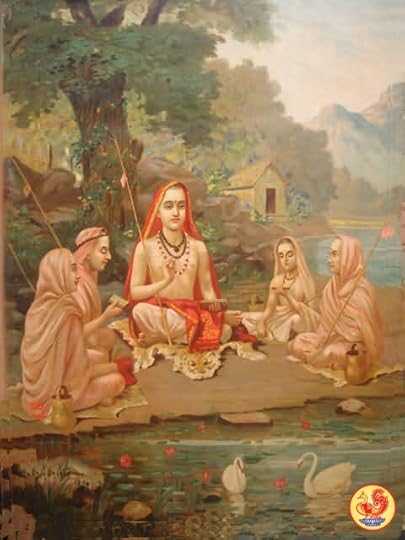
In the south of Bharatvarsh, Adi Sankara took birth in Kalady, a quiet little town on the banks of the Poorna River. He traversed the length and breadth of the land, took disciples, debated with scholars on philosophical systems, consecrated four mathas in four corners of India, and finally ascended the Throne of Omniscience in Kashmir. By the time he had achieved all this – 32 years of age – he had firmly established the advaita school of thought, which clearly elucidates the oneness of the atma and the paramatma.
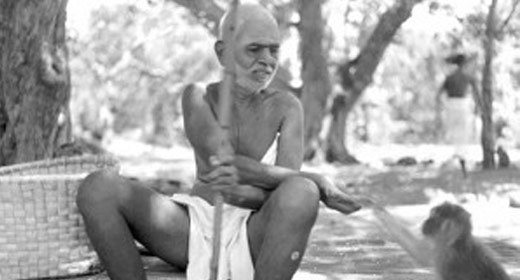
In much more recent times, another southern luminary, the Saint of Arunachala, Ramana Maharshi quietly went about practising and preaching his method of self-enquiry, and miraculously healing those who approached him of such conditions as tetanus, leprosy, terminal cancer, and in one instance, even death. However, when he was afflicted with sarcoma towards the end of his earthly tenure, he refused to heal himself as his physical condition was a result of taking on his devotees’ karma.
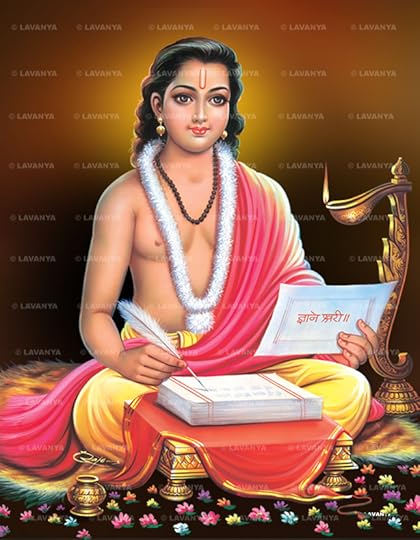
In the west of the country, around the 13th Century, scores of saints took birth in the holy land of Maharashtra. Pandharpur became the epicentre of the bhakti movement started by these illustrious sons and daughters of the soil, many of whom were ordinary peasants. The child-saint of Alandi, Jnaneshwar and his siblings were orphans and outcastes, but their life was full of miraculous achievements, and culminated in Jnaneshwari – the gift of Gitawritten in the colloquial language for the benefit of the masses.
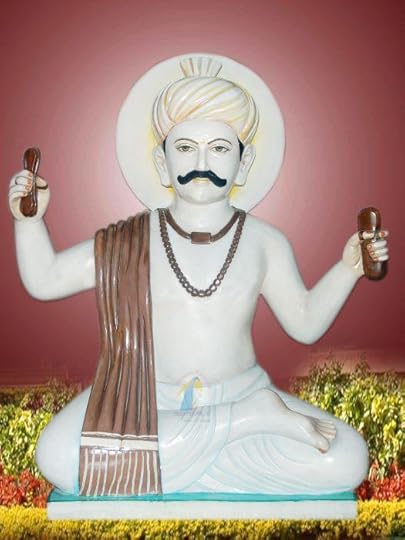
Namadeva, the son of a tailor made the Lord drink milk from his hands even when he was a little boy, while Gora Kumbhar, the potter, so lost himself in divine ecstasy that he once trampled his own child in a mound of clay (the child was eventually restored to him by the Lord Himself). Sawata Mali sang his abhangs while tending his garden, and Chokhamela who was an untouchable was so close to the Lord that when a priest slapped him for transgressing a social norm, he was aghast to find that the Lord’s cheek was swollen. It is said of Tukaram that he went away to Vaikuntha in a vimana of the Lord.
Likewise, Eknath, Bhanudas, Kanhopatra, Santaji Pawar, Raka Kumbhar, Narhari Sonar, Janabai, and many, many more have sanctified our land with their holy presence. Indeed, this is probably the real reason for epithet, ‘maha’ in Maharashtra.
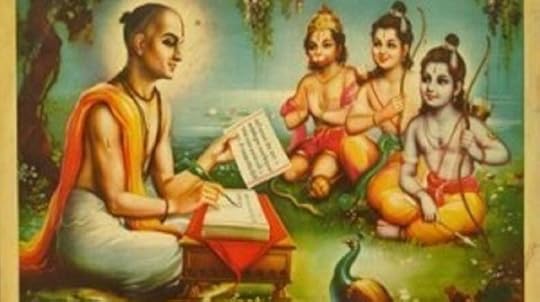
In the northern part of Bharatvarsh, Tulsidas retold the timeless story of Ram and Sita in his Ramcharitmanas, whereas Surdas preferred to become blind again after he beheld the vision of his ishtadevta, Lord Krishna just once. Another great devotee of Krishna, Meera gave us many bhajansthat are soaked with devotional fervour and longing for union with her Lord.
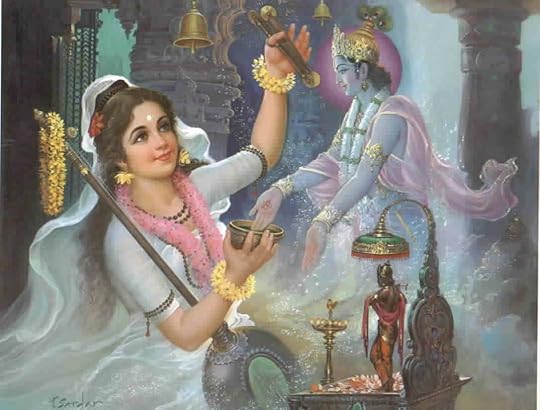
Many more adepts and yogis of the north have made the places of pilgrimage touched by the Ganga and the mystical loftiness of the Himalayas their home, and have inspired others through their tapas and sadhana. Even today, the ageless Guru Babaji is said to be present in the Himalayas, showering his grace on those worthy of it.
As Diana L. Eck has said about the tirthasthals of Bharatvarsh,
…what is clear from the study of Hindu India is that its geographical features – its rivers, mountains, hills, and coastlands – no matter how precisely rendered, mapped, or measured, are also charged with stories of gods and heroes. It is a resonant, sacred geography. Moving to the eastern part of this sacred geography, one is touched by the story of the Saint of Dakshineshwar, Ramakrishna Paramahansa, who answered his would-be student, Naren’s query about whether he has seen God, with ‘Yes, I have seen God. I see Him as I see you here, only more clearly..!’
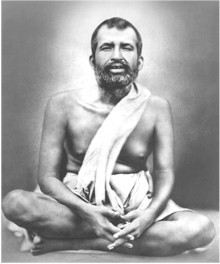
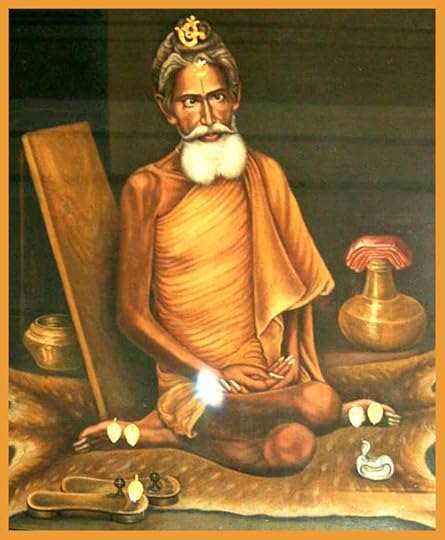
In the same sacred geography, about a hundred years before the time of the Paramahansa, Baba Lokenath Brahmachari attained such a level of oneness with the universal spirit, that he chastised an untamed lion for wandering into his ashram’s premises, patted it affectionately, and sent it along its way back into the forest!
It is not just the seers of one faith that lit up the path of their followers in Bharatvarsh. Guru Nanak spoke against blind beliefs and superstitions, while Kabir, Sai Baba of Shirdi and Shishunala Sharif, unified people of all castes and religions. Buddha advised followers to find their own way in attaining liberation from pain and suffering, while Mahavira gave the five ethical principles for his followers to achieve emancipation. Dargahs of Sufi peers dot the landscape, and Velankanni in the south is a blessed place of pilgrimage for many.
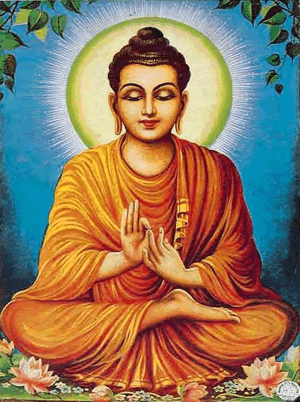
Madhvacharya (who propounded dvaita), Ramanujacharya (vishishtadvaita), Guru Raghavendra, Nammalvar, Kanakadasa, Purandaradasa, Basaveshwara, Akkamahadevi, Chaitanya Mahaprabhu, Swami Vivekananda, Sri Akkalkot Maharaj, Sri Lahiri Mahasaya, Sri Yukteswar Giri, Paramahansa Yogananda, Maheshwarnath Babaji, Bengali Baba, Swami Rama, Mahayogi Gambhirnath, Swami Sivananda Saraswati, Anandamayi Ma, Paramahansa Ram Mangal Das… One could go on and on; the list is endless.
This phenomenon is not confined to the glorious past of Bharatvarsh. Even today, genuine saints are quietly carrying on with their sadhana, unseen, unheard, and away from the bustle of daily life. Truly we are blessed to have been born on this holy land. For me, these stories provide the real meaning to that song by Iqbal, Saare jahan se achcha…
Unfortunately, the current educational system of Bharatvarsh is western in its outlook, and worldly and phenomenal in what it imparts, leaving our children vulnerable to deculturation and narrow minded religious influences. I feel that we would be failing in our duty if we do not inculcate a sense of respect and a spirit of inquiry towards our spiritual heritage in our children, by teaching them life lessons from the experiences of the spiritual masters.
Many works have been consulted in writing this panegyric on the spiritual preeminence of Bharatvarsh. Indeed, these can be recommended – from an inexhaustive list of resources – for further reading if one is interested in learning from the lives of these saints and about spirituality in Bharatvarsh:
Sankara Digvijaya: Madhav VidyaranyaSaints of Maharashtra: Savitribai KhanolkarAutobiography of a Yogi: Paramahansa YoganandaYogis of India: SivarupaVivekananda A Biography: Swami NikhilanandaBhakti Schools of Vedanta: Swami TapasyanandaIndia A Sacred Geography: Diana L. EckApprenticed to a HimalayanMaster: Sri MLiving with the Himalayan Masters: Swami Rama
Image sources:http://www.awaken.com/wp-content/uplo...
The invention of zero, for example. Also Sushruta’s pioneering efforts in surgery, Aryabhata’s contribution to early maths and astronomy, or Baudhayana’s discovery of the theorem, which came to be known as Pythagoras’ theorem later.
Or how about J C Bose’s discovery of life in plants, Raman’s experiment on light scattering, which is called Raman Effect, Sarabhai’s space project which ultimately led to the present day Chandrayaan and Mangalyaan, or Kalam’s work on developing the ballistic missile?
In the field of arts and literature too, there have been innumerable luminaries who have enriched our culture with their contributions. Kalidasa’s Abhijnana Shakuntalamand Meghdoot, Chanakya’s Arthashastra, Bharata Muni’s treatise on dance, Natya Shastra that led to the dance form, Bharatanatyam, and Tagore’s Gitanjaliand Rabindra Sangeet, to name a few.
Yes, we are filled with pride when we listen to the heroic tales of Shivaji, Rana Pratap and Bhagat Singh. We are immediately satiated when we listen to a Lata-Rafi duet, A R Rahman’s music, or Amitabh Bachchan’s filmi dialogues in his rich baritone. We cannot contain our joy when we witness a Sachin Tendulkar century, or for that matter, when Sania Mirza wins yet another world title. We jump with joy when Sushmita Sen wins the Miss Universe, and Aishwarya Rai the Miss World title.
India today is home to one of the largest community of intellectuals; doctors, engineers, economists and scientists. After years of subjugation, we are witnessing the growth of economy, and our clout among the nations of the world is growing by the day.
All that is fine. I am filled with happiness to note all these achievements.
But for me, quite apart from any of these, there is another reason why I love this land.
Its spiritual history.
There simply cannot be another place on this planet or any other for that matter, where so many spiritually advanced adepts, yogis, sadhus, saints, seers, gurus took birth, breathed, lived, meditated, attained moksha, and showed others the light.
I don’t think I can take all the names of the saints of our land; there isn’t enough time or space for that. I can only quote a few shining examples that I have had the good fortune of reading about.

In the south of Bharatvarsh, Adi Sankara took birth in Kalady, a quiet little town on the banks of the Poorna River. He traversed the length and breadth of the land, took disciples, debated with scholars on philosophical systems, consecrated four mathas in four corners of India, and finally ascended the Throne of Omniscience in Kashmir. By the time he had achieved all this – 32 years of age – he had firmly established the advaita school of thought, which clearly elucidates the oneness of the atma and the paramatma.

In much more recent times, another southern luminary, the Saint of Arunachala, Ramana Maharshi quietly went about practising and preaching his method of self-enquiry, and miraculously healing those who approached him of such conditions as tetanus, leprosy, terminal cancer, and in one instance, even death. However, when he was afflicted with sarcoma towards the end of his earthly tenure, he refused to heal himself as his physical condition was a result of taking on his devotees’ karma.

In the west of the country, around the 13th Century, scores of saints took birth in the holy land of Maharashtra. Pandharpur became the epicentre of the bhakti movement started by these illustrious sons and daughters of the soil, many of whom were ordinary peasants. The child-saint of Alandi, Jnaneshwar and his siblings were orphans and outcastes, but their life was full of miraculous achievements, and culminated in Jnaneshwari – the gift of Gitawritten in the colloquial language for the benefit of the masses.

Namadeva, the son of a tailor made the Lord drink milk from his hands even when he was a little boy, while Gora Kumbhar, the potter, so lost himself in divine ecstasy that he once trampled his own child in a mound of clay (the child was eventually restored to him by the Lord Himself). Sawata Mali sang his abhangs while tending his garden, and Chokhamela who was an untouchable was so close to the Lord that when a priest slapped him for transgressing a social norm, he was aghast to find that the Lord’s cheek was swollen. It is said of Tukaram that he went away to Vaikuntha in a vimana of the Lord.
Likewise, Eknath, Bhanudas, Kanhopatra, Santaji Pawar, Raka Kumbhar, Narhari Sonar, Janabai, and many, many more have sanctified our land with their holy presence. Indeed, this is probably the real reason for epithet, ‘maha’ in Maharashtra.

In the northern part of Bharatvarsh, Tulsidas retold the timeless story of Ram and Sita in his Ramcharitmanas, whereas Surdas preferred to become blind again after he beheld the vision of his ishtadevta, Lord Krishna just once. Another great devotee of Krishna, Meera gave us many bhajansthat are soaked with devotional fervour and longing for union with her Lord.

Many more adepts and yogis of the north have made the places of pilgrimage touched by the Ganga and the mystical loftiness of the Himalayas their home, and have inspired others through their tapas and sadhana. Even today, the ageless Guru Babaji is said to be present in the Himalayas, showering his grace on those worthy of it.
As Diana L. Eck has said about the tirthasthals of Bharatvarsh,
…what is clear from the study of Hindu India is that its geographical features – its rivers, mountains, hills, and coastlands – no matter how precisely rendered, mapped, or measured, are also charged with stories of gods and heroes. It is a resonant, sacred geography. Moving to the eastern part of this sacred geography, one is touched by the story of the Saint of Dakshineshwar, Ramakrishna Paramahansa, who answered his would-be student, Naren’s query about whether he has seen God, with ‘Yes, I have seen God. I see Him as I see you here, only more clearly..!’


In the same sacred geography, about a hundred years before the time of the Paramahansa, Baba Lokenath Brahmachari attained such a level of oneness with the universal spirit, that he chastised an untamed lion for wandering into his ashram’s premises, patted it affectionately, and sent it along its way back into the forest!
It is not just the seers of one faith that lit up the path of their followers in Bharatvarsh. Guru Nanak spoke against blind beliefs and superstitions, while Kabir, Sai Baba of Shirdi and Shishunala Sharif, unified people of all castes and religions. Buddha advised followers to find their own way in attaining liberation from pain and suffering, while Mahavira gave the five ethical principles for his followers to achieve emancipation. Dargahs of Sufi peers dot the landscape, and Velankanni in the south is a blessed place of pilgrimage for many.

Madhvacharya (who propounded dvaita), Ramanujacharya (vishishtadvaita), Guru Raghavendra, Nammalvar, Kanakadasa, Purandaradasa, Basaveshwara, Akkamahadevi, Chaitanya Mahaprabhu, Swami Vivekananda, Sri Akkalkot Maharaj, Sri Lahiri Mahasaya, Sri Yukteswar Giri, Paramahansa Yogananda, Maheshwarnath Babaji, Bengali Baba, Swami Rama, Mahayogi Gambhirnath, Swami Sivananda Saraswati, Anandamayi Ma, Paramahansa Ram Mangal Das… One could go on and on; the list is endless.
This phenomenon is not confined to the glorious past of Bharatvarsh. Even today, genuine saints are quietly carrying on with their sadhana, unseen, unheard, and away from the bustle of daily life. Truly we are blessed to have been born on this holy land. For me, these stories provide the real meaning to that song by Iqbal, Saare jahan se achcha…
Unfortunately, the current educational system of Bharatvarsh is western in its outlook, and worldly and phenomenal in what it imparts, leaving our children vulnerable to deculturation and narrow minded religious influences. I feel that we would be failing in our duty if we do not inculcate a sense of respect and a spirit of inquiry towards our spiritual heritage in our children, by teaching them life lessons from the experiences of the spiritual masters.
Many works have been consulted in writing this panegyric on the spiritual preeminence of Bharatvarsh. Indeed, these can be recommended – from an inexhaustive list of resources – for further reading if one is interested in learning from the lives of these saints and about spirituality in Bharatvarsh:
Sankara Digvijaya: Madhav VidyaranyaSaints of Maharashtra: Savitribai KhanolkarAutobiography of a Yogi: Paramahansa YoganandaYogis of India: SivarupaVivekananda A Biography: Swami NikhilanandaBhakti Schools of Vedanta: Swami TapasyanandaIndia A Sacred Geography: Diana L. EckApprenticed to a HimalayanMaster: Sri MLiving with the Himalayan Masters: Swami Rama
Image sources:http://www.awaken.com/wp-content/uplo...
Published on November 29, 2015 02:24
November 18, 2015
November 12, 2015
Film review: Prem Ratan Dhan Payo (*no spoilers*)

There are a couple of things to bear in mind when you go to watch a Sooraj Barjatya film.
(A) Suspend disbelief, and (B) Never go by critics' reviews.
'A' because a few liberties are always taken in his films, especially when it comes to the medical field. You just have to accept what's being presented, let go, and enjoy! That's the best way to watch his films.
'B' because the last time the critics panned his film, it went on to become Indian cinema's biggest ever hit: Hum Aapke Hain Kaun..!
So what's Prem Ratan Dhan Payo all about?
I won't give away the story, but you may get a general idea about what it might be about.
So here goes.
Remember Chitchor? That simple yet touching film made by the same Rajshri Productions, with unforgettable songs by Ravindra Jain and Yesudas?
Take that.
Also, while you are at it, grab Paheli (incidentally Amol Palekar acted in Chitchor, whereas he directed Paheli).
Also add a dash of Mark Twain's Prince and the Pauper.
And don't forget to sprinkle a bit of Ram aur Shyam, Seeta aur Geeta, Chaalbaaz and Kishen Kanhaiya.
Oh, and for the title, replace Ram with Prem in Meera Bai's bhajan, Ram Ratan Dhan Payo.
And there you have it. Prem Ratan Dhan Payo.
Okay, I am being a tad unfair. Yes, PRDP reminds one of all the films mentioned above, yet it is different.
For starters, is made on a much larger, grandiose scale. There are subplots woven into the story. Barjatya has made all efforts to present the story in a novel, light hearted manner. And it works.
So what's the same?
As with any Barjatya film, PRDP, at its core, is about love. It displays Indian tradition and draws its emotional appeal heavily from family values and relationships within the family. It is opulent. The sets are lavishly mounted, and it is a visual treat.
And what's different?
First of all, PRDP does not have a massive starcast, as in HAHK. There's only Anupam Kher. Reema Lagoo and Alok Nath are conspicuously absent!
There are less songs than a typical Barjatya film.
And - get this - there is action! There is a stunningly crafted horse-coach scene in the beginning, sword fight in the middle, and dishum-dishum at the end. Too much action for a Barjatya film!
A few grouses
The background music was a bit too loud, making it difficult to follow the dialogues. Some songs have been cut to trim down the overall length of the film (it is now 174 minutes long).
Does it recreate the magic of HAHK? No. But then, I don't think any film can.
What works?
Barjatya has got starpower with him, as usual. That alone will ensure the opening. Prem has become a saleable commodity, which will draw in Salman Khan fans by the lakhs.
The music, songs and choreography are first rate, and it seems that Himesh Reshammiya has a hit on his hands.
Overall, terrific Diwali entertainment. Enjoy it!
Image source: http://s2.dmcdn.net/Ogfwe/1280x720-vd...
Published on November 12, 2015 02:42
November 7, 2015
How about banning some non-Diwali pollutants?
It’s that time of the year again. Diwali is round the corner!

It is time for lamps, sweets, new clothes and fireworks.
Did I say fireworks?
It seems that many people want to take the fun out of the festival this time round. The amount of paranoia and sudden discovery of environment-consciousness beggars belief.
The Chief Minister has also thrown his hat into the ring. I received a recorded call on the mobile in which he has appealed against the bursting of crackers during this Diwali.
In other parts of the country, parents of toddlers have registered a case in the court against the bursting of crackers, school children are taking out processions with placards reading, 'Let's celebrate pollution free Diwali', celebrities are tweeting about going noiseless this Diwali, and just about anybody who is somebody is expressing his or her anguish at the immense suffering caused by the bursting of crackers during the festival.
How noble!
This got me thinking. Why target only Diwali? Since we are so good at banning everything, why not look at a few other irritants that can also be banned?
Here are some suggestions.
Vehicles: Diwali lasts for 3 days in a year. The rest of the 362 days of the year, and even during those 3 days, there are millions of vehicles on the road emanating noxious fumes. Several studies have shown that if you are a city dweller, your lungs turn black due to the exposure to vehicular emissions, and are prone to asthma and bronchitis. Why not BAN VEHICLES?
Cigarettes: Apparently India has signed on to the global anti-smoking drive. But just walk around any street, and you will find men, and yes, women too, smoking like chimneys. Second hand smoke has been proved to be as dangerous as actively smoking beedis or cigarettes. Perhaps the parents of those toddlers can go to each one of the culprits and pluck that stick out of their mouths! After that, they can - literally - kick their butts.
Sources of noise: Ah yes, those green-twine bombs make a lot of noise.
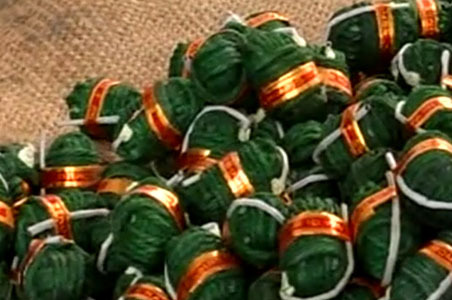
The Government says that a cracker should not emit more than 90 dB at a distance of 5 metres. Then how about the HOOOOOOOOOOOOONK!!!! that cars and bikes emit? Forget busy intersections, even the so-called silent zones - schools and hospitals - are not spared from the earsplitting cacophonous horn. And not to forget that annoying reverse-parking alarm. Can you SILENCE THEM?
Also, don't these cracker-phobics find the religious 'call for prayer' at 5 in the morning disturbing? Or how about late night clubs that keep the party going on well past the prescribed closing time? What about celebrities' or ministers' events that can go on for hours and cause traffic jams? Or the missionaries' stage shows wherein loud proclamations of miracle healing are made, followed by exhortations to change over to the true path. Why don't you BAN ALL OF THEM?
Driving:Bursting crackers is very risky they say. They can explode, they are flammable and can cause burn injuries. Driving is highly risky, yet we do it every day, don’t we? Have you seen how we drive on our roads? Can there be anything riskier than travelling on our roads? Death is a constant co-passenger on our roads where the only rule is that there is no rule. Why not BAN DRIVING?
I could go on, but you get the idea...
In the UK, Guy Fawkes day is celebrated every year round about the time of Diwali. There are massive fireworks displays to commemorate the foiling of the plot to blow up the Parliament House by Guy Fawkes and his colleagues in 1605.
If western people celebrate an event that happened about 400 years ago, it is fine. But somehow a tradition that goes back thousands of years has now suddenly become passe for these western educated and culturally shortsighted elite.
I still remember that as children, we used to plan for the bursting of crackers several days ahead of Diwali. Buying the crackers and dividing them into three portions to be lit on each of the three days of the festival gave us immense joy. Then on the first day of the festival, we would compete with each other to be the first to go out and burst the cracker. By evening, the entire street would be lined with lamps and families would come out to light flowerpots, bhoomi chakras, vishnu chakras, sparklers, rockets, pencils and wires. Sometimes we would gift these crackers to the less privileged children, which invariably brought about a huge smile on their faces.
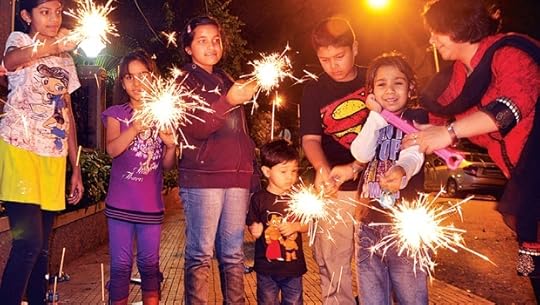
Are you saying that the very same toddlers, whose parents have filed the litigation would not enjoy fireworks? As usual, it is not the children, but the adults that are the problem.
Would you give up on your time honoured tradition, just because there is a risk involved in following the practice? There is an element of risk in everything that we do. It is not banning, but managing the event responsibly that is the key here. So what can we do to have a safe Diwali this year?
The first and foremost is awareness and safety consciousness. There may well be government legislations and safety norms that cracker manufacturers have to adhere to, but without our own mindfulness and efforts, these can never make a difference.
By all means, go for noiseless crackers. Spend less on crackers, but do not totally ban them from your children's lives. Distribute the crackers that you among with the less privileged. Why not identify a communal area in your locality where families can get together to burst crackers. That way, smoke and noise can be reduced in the residential areas. This would also help those with respiratory and cardiac problems, and animals that are sensitive to noise from crackers. Do not burst crackers during the official night time (10 p.m. to 6 a.m.).
Diwali is a wonderful festival that signifies the victory of good over evil. If we follow some basic precautions, it is possible to safely celebrate this victory with lights from lamps, serial sets and firecrackers.
The take home message is celebrate, but be responsible.
Here’s wishing a happy and safe Diwali to all!
And yes, I will be bursting crackers this year too!
Image sources:http://happydiwalifestival.com/wp-con...
Published on November 07, 2015 07:26
October 23, 2015
Golf course or animal conservation? You choose.
Nimesh Ved writes in an article in Deccan Herald dated 20 October 2015, that a golf course is scheduled to come up in the Kaziranga National Park area.
Seriously, a golf course? Of all the things, a golf course? Why? Who sanctioned this ignominy? Or perhaps we should be asking, how much did they get to sanction it?
Golf is a western concept wherein people who have nothing better to do go to these parks to while away time.
Don't people realise that in a developing country such as ours, time is of the essence? Land space is depleting at an alarming rate due to the never ending rise in population. Lakes are being encroached upon, children's play areas are being occupied, and animals are being poached or confined to zoos.
And all they could think of is a blooming GOLF COURSE?????!!!!!
Of all the recreational activities that pass as sports, the poorest examples are probably boxing and golf.
As Ved himself lists in his article, golf courses are like blood sucking vermins that drain resources and manpower: an 18 hole course requires an annual water supply that can fill about 130 swimming pools, high concentration pesticides are used in maintaining them, large number of trees have to be cut down to create a golf course, they offer no source of income to the local population, and animals are totally fenced off.
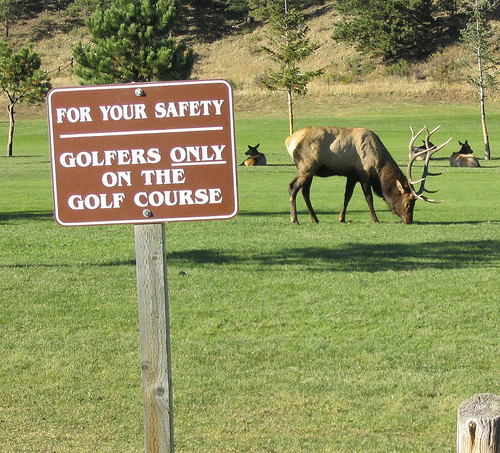
Ved also quotes G K Chesterton, who said that golf is 'an expensive way of playing marbles'. I couldn't agree more.
Infact, let's go further and say that golf is not a sport at all. What kind of physical exertion is involved in playing it? The players have servants to carry their sticks for them. And when they hit the ball, they travel to the next hole in a vehicle!
It is a ridiculous game that the elitist, classist nouveau riche who have time to kill and money to burn indulge in.
At least in our country, instead of pandering to the whims of these rotten rich, can't the same land be utilised to protect endangered animals, to build children's playground, or to erect hospitals for the poor?
The golfers can have a virtual simulation of their precious game, and they can while away their time on it as much as they want.
Or else, they can quite literally, stick it!
Image source: http://www.glitters20.com/wp-content/...
Seriously, a golf course? Of all the things, a golf course? Why? Who sanctioned this ignominy? Or perhaps we should be asking, how much did they get to sanction it?
Golf is a western concept wherein people who have nothing better to do go to these parks to while away time.
Don't people realise that in a developing country such as ours, time is of the essence? Land space is depleting at an alarming rate due to the never ending rise in population. Lakes are being encroached upon, children's play areas are being occupied, and animals are being poached or confined to zoos.
And all they could think of is a blooming GOLF COURSE?????!!!!!
Of all the recreational activities that pass as sports, the poorest examples are probably boxing and golf.
As Ved himself lists in his article, golf courses are like blood sucking vermins that drain resources and manpower: an 18 hole course requires an annual water supply that can fill about 130 swimming pools, high concentration pesticides are used in maintaining them, large number of trees have to be cut down to create a golf course, they offer no source of income to the local population, and animals are totally fenced off.

Ved also quotes G K Chesterton, who said that golf is 'an expensive way of playing marbles'. I couldn't agree more.
Infact, let's go further and say that golf is not a sport at all. What kind of physical exertion is involved in playing it? The players have servants to carry their sticks for them. And when they hit the ball, they travel to the next hole in a vehicle!
It is a ridiculous game that the elitist, classist nouveau riche who have time to kill and money to burn indulge in.
At least in our country, instead of pandering to the whims of these rotten rich, can't the same land be utilised to protect endangered animals, to build children's playground, or to erect hospitals for the poor?
The golfers can have a virtual simulation of their precious game, and they can while away their time on it as much as they want.
Or else, they can quite literally, stick it!
Image source: http://www.glitters20.com/wp-content/...
Published on October 23, 2015 22:01
October 21, 2015
Article on food poisoning
Published on October 21, 2015 21:06
October 17, 2015
Is this the India we want?
I am writing this on the morning of 2nd October. Gandhiji’s favourite hymns and bhajansare playing in the background. Later in the day, the film Gandhi will be shown on television, just as it is shown every year this day.
The day’s newspaper carries the screaming headline: the family of the man who was lynched for eating beef demands CBI probe, and eight families flee the village where he was living. The irony is inescapable.
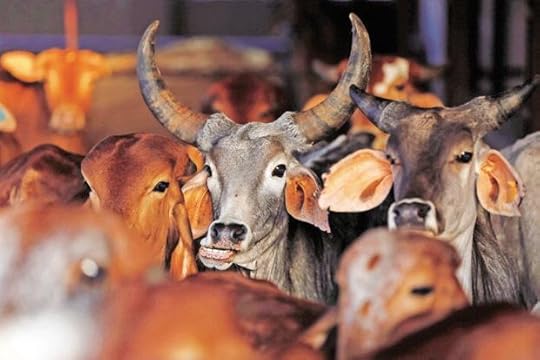
Is this the India Gandhiji would have wanted to see? Is this the India you and I want?
Over the last few months, there have been several instances of intolerance and superstitious practices that have made headline news. No doubt, there are regional issues at play in the occurrence of each of these incidents, but taken collectively, they are indicative of the hypocrisy and misplaced sense of importance ascribed to certain matters that we hold dear.
Yes, go-raksha is important, but don’t we also come across several abandoned cows roaming our streets, blocking traffic, sitting in filth, and eating garbage? If we were genuinely concerned about the animal’s well-being, there would not be a single stray cow in our urban areas.
Why should the culinary habits of certain communities affect our sentiments so much anyway? How different is the imposition of beef ban from ‘non-believers’ being forced to refrain from eating in public during the fasting month in middle-eastern countries?
Besides, why confine your daya to the cow only? Doesn’t Sanatana Dharma consider every living being to be an aspect of the divine? Therefore, shouldn’t we be saving all animals; dogs, cows, donkeys, buffaloes, and birds in cages from a life of bondage and abuse?
A prominent weekly magazine recently reported that in a southern state – where animal sacrifice during religious festivals is rampant – there has been a spate of human sacrifices. At least two individuals – a man and a child – were found murdered with their throats slit, and the paraphernalia of ritual worship were lying all around them.
In another harrowing incident, this time in another southern state, a mother who went looking for her missing son, was shocked to find his body parts in her neighbour’s house. The man had enticed the child into entering his house and carried out the deed. Vigilantes later caught hold of the man and attempted to burn him.
I can almost visualize the missionary exhorting his gullible audience: “Is this the kind of religion that you want to belong to? Give up your barbaric faith, you heathen, and repent while you can! Join the only true path and save your souls!!”
Hold on Mr Missionary. Let’s look at what your brethren from a northeastern state have been up to. Members of a certain NGO have apparently taken it upon themselves to “cleanse the society of homosexuals”. As part of the anti-LGBT drive, volunteers have pledged to go door-to-door to “bring them back” to “proper culture”. Further, they said, “we believe in God; as per our teachings, homosexuality is a wrongful deed, we want males to be like males and females to be like females.”
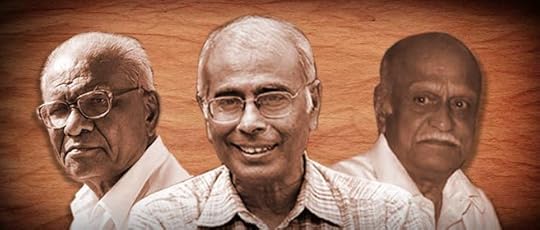
Over the last few months, as many as three rationalists have been shot dead, allegedly for publicly airing their opinions. The fact that dissent and debate have been time-honoured components of free speech in India doesn’t seem to matter anymore. Or perhaps, this must be a sign of emasculation; if you are unable to counter the rationalist’s view with a sane counter-argument, get rid of the source of the problem itself.
Why does somebody else’s culture, dietary habits, sexuality and opinions rankle us so much? Are we so insecure that differences such as these should erode our sense of acceptance, tolerance and peaceful coexistence?
If our culture, religion and society do not evolve, and instead rigidly hold on to pietistic and deadwood practices, we would be in serious danger of turning into Taliban-land. Or an ISIS-controlled state. And that is the last thing we would ever want. Before it is too late, we need to shun the narrowness, the hypocrisy, the superstition, and the intolerance.
Speaking of hypocrisy, the media should also accord equal importance to misdemeanours committed by adherents of all faiths. Focusing entirely on the antics of a few fringe elements of the majority religion takes the attention away from the fruitful work that the present government is carrying out, which is so much better than that of the previous ridiculous government. And the same request goes out to the 'civil' society of India, authors included.
So, to answer the question, this is not the India I want. I want my religion and country to be freein every sense of the word. How about you?
Image sources:
http://www.livemint.com/rf/Image-621x...
http://www.newslaundry.com/wp-content...
The day’s newspaper carries the screaming headline: the family of the man who was lynched for eating beef demands CBI probe, and eight families flee the village where he was living. The irony is inescapable.

Is this the India Gandhiji would have wanted to see? Is this the India you and I want?
Over the last few months, there have been several instances of intolerance and superstitious practices that have made headline news. No doubt, there are regional issues at play in the occurrence of each of these incidents, but taken collectively, they are indicative of the hypocrisy and misplaced sense of importance ascribed to certain matters that we hold dear.
Yes, go-raksha is important, but don’t we also come across several abandoned cows roaming our streets, blocking traffic, sitting in filth, and eating garbage? If we were genuinely concerned about the animal’s well-being, there would not be a single stray cow in our urban areas.
Why should the culinary habits of certain communities affect our sentiments so much anyway? How different is the imposition of beef ban from ‘non-believers’ being forced to refrain from eating in public during the fasting month in middle-eastern countries?
Besides, why confine your daya to the cow only? Doesn’t Sanatana Dharma consider every living being to be an aspect of the divine? Therefore, shouldn’t we be saving all animals; dogs, cows, donkeys, buffaloes, and birds in cages from a life of bondage and abuse?
A prominent weekly magazine recently reported that in a southern state – where animal sacrifice during religious festivals is rampant – there has been a spate of human sacrifices. At least two individuals – a man and a child – were found murdered with their throats slit, and the paraphernalia of ritual worship were lying all around them.
In another harrowing incident, this time in another southern state, a mother who went looking for her missing son, was shocked to find his body parts in her neighbour’s house. The man had enticed the child into entering his house and carried out the deed. Vigilantes later caught hold of the man and attempted to burn him.
I can almost visualize the missionary exhorting his gullible audience: “Is this the kind of religion that you want to belong to? Give up your barbaric faith, you heathen, and repent while you can! Join the only true path and save your souls!!”
Hold on Mr Missionary. Let’s look at what your brethren from a northeastern state have been up to. Members of a certain NGO have apparently taken it upon themselves to “cleanse the society of homosexuals”. As part of the anti-LGBT drive, volunteers have pledged to go door-to-door to “bring them back” to “proper culture”. Further, they said, “we believe in God; as per our teachings, homosexuality is a wrongful deed, we want males to be like males and females to be like females.”

Over the last few months, as many as three rationalists have been shot dead, allegedly for publicly airing their opinions. The fact that dissent and debate have been time-honoured components of free speech in India doesn’t seem to matter anymore. Or perhaps, this must be a sign of emasculation; if you are unable to counter the rationalist’s view with a sane counter-argument, get rid of the source of the problem itself.
Why does somebody else’s culture, dietary habits, sexuality and opinions rankle us so much? Are we so insecure that differences such as these should erode our sense of acceptance, tolerance and peaceful coexistence?
If our culture, religion and society do not evolve, and instead rigidly hold on to pietistic and deadwood practices, we would be in serious danger of turning into Taliban-land. Or an ISIS-controlled state. And that is the last thing we would ever want. Before it is too late, we need to shun the narrowness, the hypocrisy, the superstition, and the intolerance.
Speaking of hypocrisy, the media should also accord equal importance to misdemeanours committed by adherents of all faiths. Focusing entirely on the antics of a few fringe elements of the majority religion takes the attention away from the fruitful work that the present government is carrying out, which is so much better than that of the previous ridiculous government. And the same request goes out to the 'civil' society of India, authors included.
So, to answer the question, this is not the India I want. I want my religion and country to be freein every sense of the word. How about you?
Image sources:
http://www.livemint.com/rf/Image-621x...
http://www.newslaundry.com/wp-content...
Published on October 17, 2015 21:30
October 7, 2015
World Mental Health Day 2015
Published on October 07, 2015 07:59
October 6, 2015
Article on carpal tunnel syndrome
Published on October 06, 2015 07:19
October 2, 2015
Book review: Classic Khushwant Singh

Classic Khushwant Singh
(Collection of 4 novels: Train to Pakistan, I Shall Not Hear the Nightingale, Delhi & Burial at Sea)
Penguin 2010
When it is a Khushwant Singh book, I just read. Not because of the gossipy nature of the grand old man's writing, but because he is the grand old man of Indian literature. Now of course, he is the late grand old man, which only adds to be appeal.
This compendium of four of Singh's best stories was initially put together 1996. This edition is big - at 851 pages - and, like the man himself towards his end days, appears delicate and old. Some of the thinly cut pages are coming undone, especially towards the latter half of the book.
Nevertheless, it is the content that we are more interested in. If there is one theme that unites all these disparate stories, it is the British Raj. And Partition. Did I mention sex? Yes, that too. In fact, oodles of it! As Singh himself says in his introduction to Delhi, the story is 'injected [with] a lot of seminal fluid'. The grand old man could not help reverting back to his favourite preoccupation, it appears. No wonder he turned out to be the grand old man, because sex (and Scotch) seems to have increased his longevity significantly.
Train to Pakistan is based right in the middle of Partition, and talks about the gradual deterioration of relations between neighbours of the same village, those belonging to different communities; Sikh and Muslim. I Shall... tells the story of a Sikh family during the British Raj, in which the father is loyal to the British, and the son is a bit of a revolutionary seeking freedom from oppression. Here, it is the character of the mother that is interesting to me, because she is reminiscent of Singh's own grandmother, who was known to be a pious lady with a lot of spiritual experiences.
Delhi on the other hand is about his favourite city and its bloody history. Singh apparently worked on Delhi for nearly 20 years, and has put together the accounts of the poet, Mir Taqi Meer, Timur, Nadir Shah, Aurangzeb, Bahadur Shah Zafar, the 1857 uprising (both of which remind one of William Dalrymple's searing account of The Last Mughal), construction of Lutyens' Delhi, Indira Gandhi's assassination and the subsequent massacre of Sikhs in Delhi.
However it is his interspersing of his affair with an eunuch, Bhagmati with the history of Delhi that brings his irreverence to the fore, and perhaps serves as an allegorical reference to Delhi's emasculation at the hands of various invaders and tyrants over the years.
In the last story, Burial..., Singh appears to have based his characters loosely on the 'first' family of Indian politics; especially Nehru & Indira. Singh's irreverence and atheistic tendencies - even though he kept the external appearance of a Sikh throughout his life - is evident here. Hence, we have a tantric sadhvi who bathes naked in the river with her pet tiger and has a sexually charged affair with a rich industrialist, and a yoga teacher who is seduced by his student, the daughter of the industrialist.
As always, through all these stories, Singh's preoccupation with four issues is apparent: sex in its various inglorious manifestations, death and the rituals that follow thereafter, religious irreverence, and a scatological obsession with the workings of the bowels and their products.
He dedicates an entire chapter to the last issue in Delhi. Going back to the first issue, it seems that Singh liked his women with ample tops and voluminous posteriors. And believe me, the description of both the issues is a lot more colourful in Singh's writing!
Image source: http://img6a.flixcart.com/image/book/...
Published on October 02, 2015 04:39



